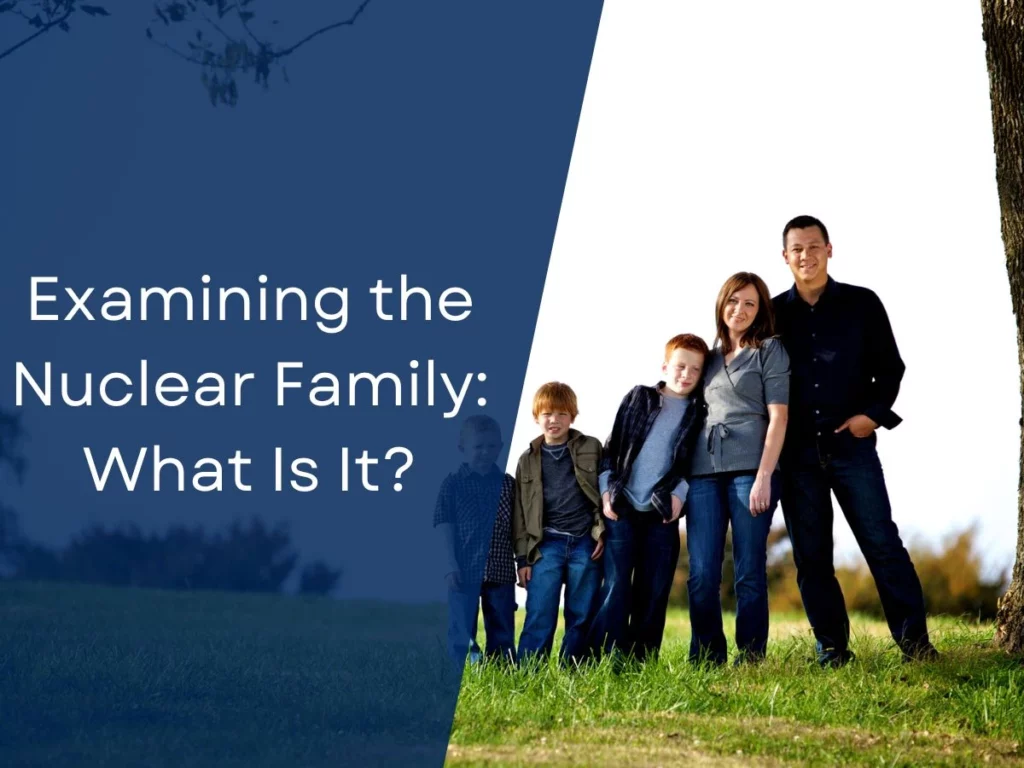When we were growing up, we were used to seeing either our mother or father, or both, around the home. We saw how they provided for our needs and they taught us family traditions.
Without a family, it would be difficult if not impossible for a baby to survive.
The family is needed for the continuation of humankind. As a species, to jeopardize that unit would be to threaten the existence of man directly. To protect the family, we have to understand the different aspects of this unit. We must understand the types of family and how they function.

Understanding the Family
One can consider the nuclear family to be the nexus of civilization. Every human being is spawned and nurtured to become a part of a family unit, eventually. That is unless they prefer isolation.
You can consider it an essential economic, political, and communal unit.
The family unit is responsible for teaching an individual all about life. They learn lessons important to survival. These lessons include material worth and the value of work.
A child learns about love, language, food, needs, rejection, fear, emotional support and a number of other necessities of life that dictates how we interact with others.
It is within the family unit that we typically see the first representation of authority. This is typically a father and a mother, or in some cases, a guardian.
Family members are representatives of how a group of people should cooperate to achieve common goals. You learn lessons of respect, manners, and some even get homeschooled.
A family is undoubtedly where you get your societal and emotional skills.
What is a Family?
Generally, a family is made up of a mother, a father and child or children. This is the traditional makeup of a family. It will vary depending on which society or culture you are living in.
Extended Family
An extended family usually has other relatives living in the same house, along with the parents and children. This can be a grandparent, adult sibling, or step-relative.
Single Parent
Single parent units usually comprise of one parent and a child or children. Consistent with the U.S. Census taken in 2017, “of the twelve million single-parent families, more than 80% were headed by single mothers.”
Blended or Mixed Family
This family unit has gotten more common in the 21st century. It is generally made up of adult parents who had children with other partners, but are now living together as one family unit. These children can be adults as well.
Foster Family
This type of family unit is generally assigned by the courts when a child is usually abandoned, abused, or removed from their biological family for some reason.
Every family is structured differently – especially in the 21st century where families are ever evolving.
Understanding What is a Nuclear Family
As mentioned, the nuclear family is the traditional form of a family unit. It is composed of two parents living with their child or children, providing for their needs and raising them according to their principles, values, and customs.
In the western Hemisphere, it is the more popular family structure, and usually, children in this type of family are born in wedlock.
Nevertheless, the modern age has brought an evolution of the family structure that has forced many to re-examine existing values as well as legislation.
In decades past, arguably, only the single parent or women-led families were outside of the norm. Nowadays, there are quite a few family units to add to that list.
Functions of a Nuclear Family
Even though families might change depending on the society, they are accountable for doing certain roles. The most important is to procreate and be of some value to society.
The role of the family is generally the same, no matter where you are in the world.
And the expectations, for the fulfillment of these roles, are the same. Regardless of circumstances, it is expected of all families to do these functions that are listed below.
- Ensure the continuation of the species through reproduction or procreation.
- Help a child to become an accountable citizen of its country.
- Make sure that its members are supplied with love, health care, clothes, shelter and food.
- There should be a continued passing down of general customs, language, attitudes, religious beliefs, and goals.
- Ensure that kinship relationships are respected and that the boundaries are never crossed. That includes to dissuade incestual relationships.
- Pass on derived or acquired status to its members. This includes the family name.
These are several of the most basic functions of a family. It is definitely not an exhaustive list, but it contains the most frequent functions represented across the world.
